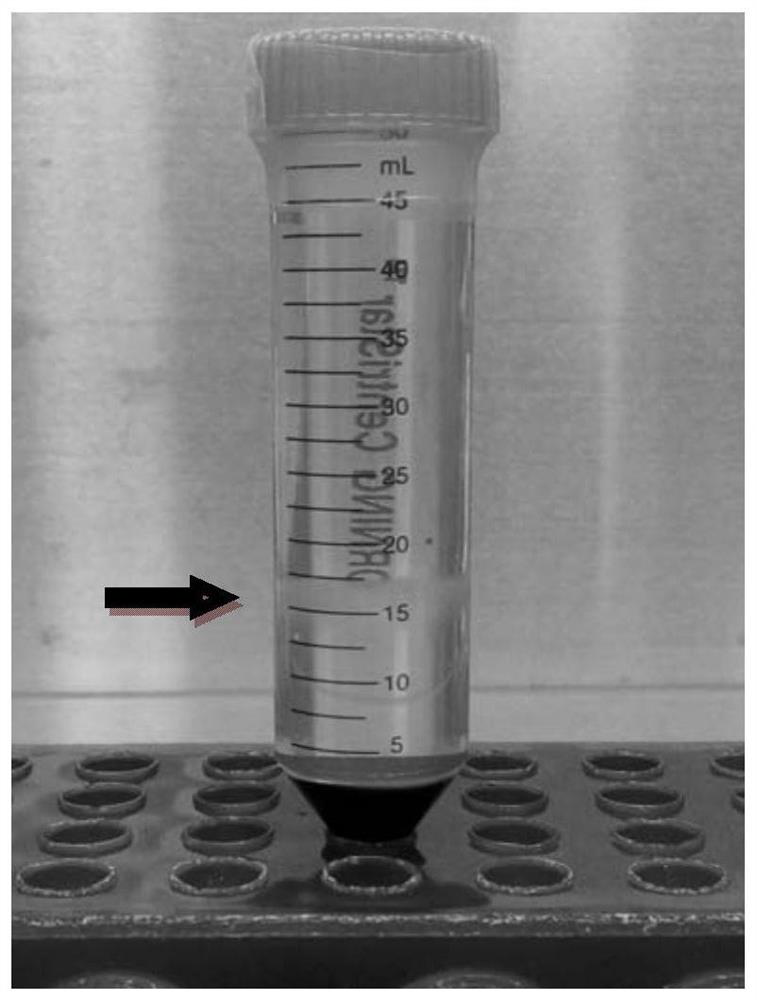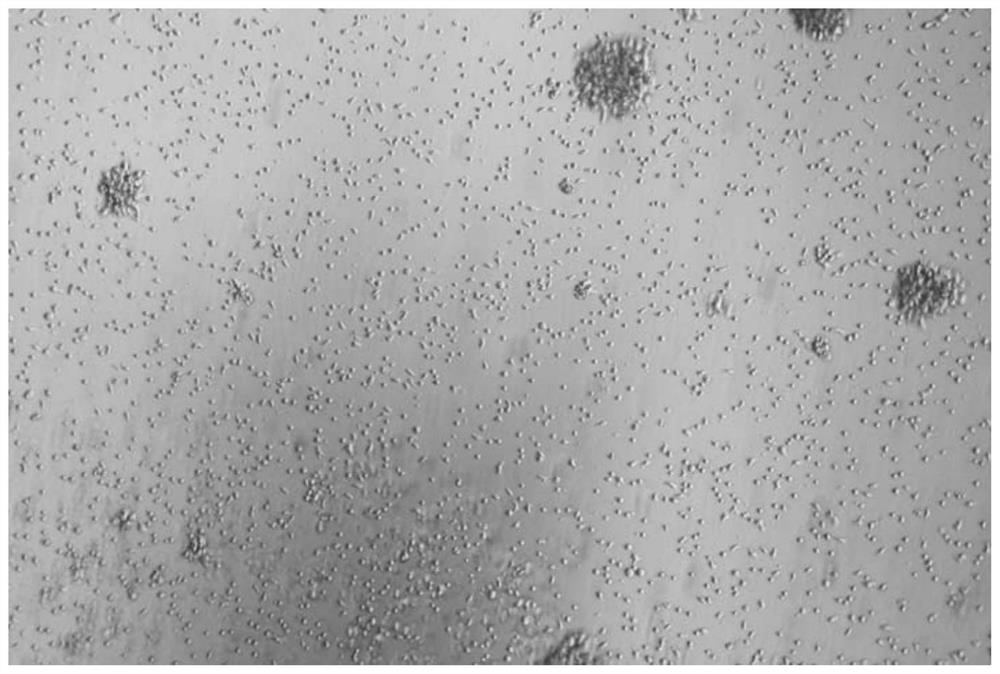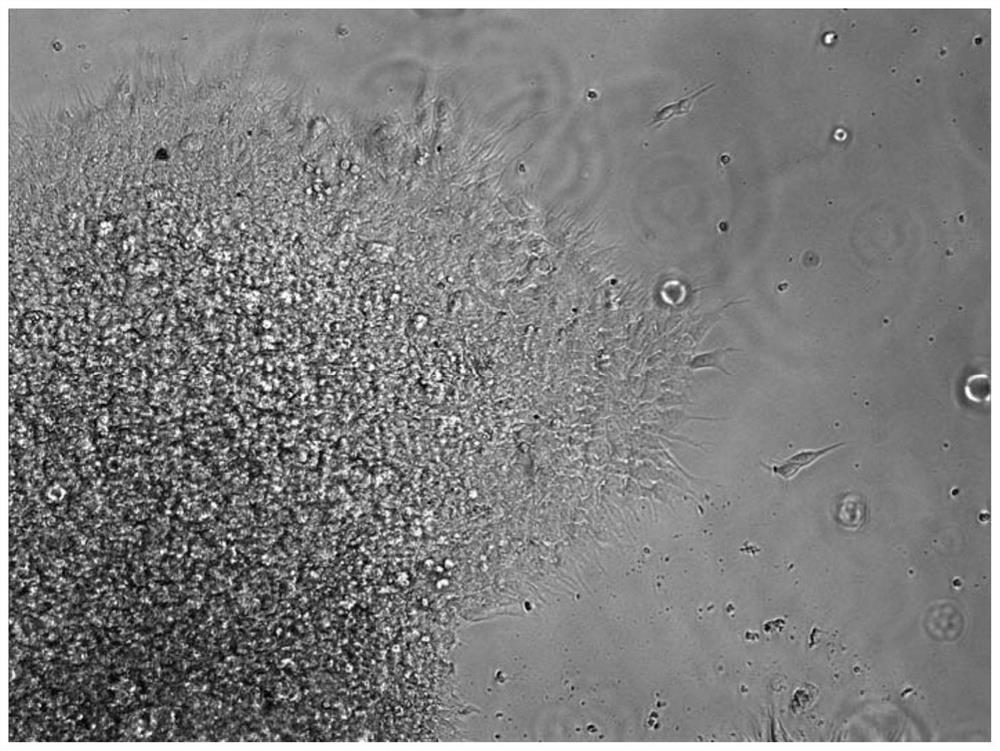A method for inducing neural stem cells and its application
A technology of neural stem cells and neural precursor cells, applied in the fields of neural stem cells and biomedicine, can solve the problems of large trauma of fibroblasts, difficulty in culturing fibroblasts, and easy pollution of cell sources.
- Summary
- Abstract
- Description
- Claims
- Application Information
AI Technical Summary
Problems solved by technology
Method used
Image
Examples
Embodiment 1
[0078] Example 1 Inducing Peripheral Blood Mononuclear Cells to Differentiate into Neural Stem Cells
[0079] Step 1: Separation of mononuclear cells in blood.
[0080] (1) At room temperature, 6ml of adult peripheral venous blood was collected, stored in a heparin anticoagulant tube, and mixed upside down 5 times.
[0081] (2) Mononuclear cells were collected by density gradient centrifugation: the peripheral blood was diluted 1:2 with PBS, and stored in a 50ml centrifuge tube at room temperature. If the diluted blood was not enough for 35ml, it was replenished with PBS.
[0082] (3) Take another 50ml centrifuge tube to hold 15ml of Ficoll-Paque Premium, and then tilt it at 45 degrees so that the diluted blood slowly flows into the tube of Ficoll-Paque Premium.
[0083] (4) Centrifuge at 25 degrees for 30 minutes at a speed of 750g, and turn off the centrifuge brake during centrifugation.
[0084] (5) After centrifugation, the upper layer of the centrifuge tube is the plasm...
experiment example 2
[0104] Experimental Example 2 Inducing Neural Stem Cells to Express Neural Stem Cell Marker Proteins
[0105] The induced neural stem cells were divided into 5×10 4 Inoculated on polylysine and laminin-coated 12mm glass slides, cultured in neural stem cell culture medium for 48 hours and then stained, the specific steps are:
[0106] (1) Aspirate the medium, wash twice with PBS, and then add 4% paraformaldehyde to fix for 10 minutes.
[0107] (2) Absorb paraformaldehyde, add 0.3% PBST 1ml, repeat 3 times, each interval is 5 minutes.
[0108] (3) Add 3% donkey serum to block for 1 hour at room temperature. 4. After 1 hour, add the primary antibody, respectively add antibodies such as Nestin (1:500Mouse BD bioscience), Sox1 (1:200Goat BD bioscience) to 1% donkey serum in proportion, and then incubate the cells at 4 degrees overnight.
[0109] (4) Remove the primary antibody and add the corresponding secondary antibody. Donkey anti-mouse FITC corresponds to Nestin at a ratio ...
experiment example 3
[0112] Experimental Example 3 Neural stem cells were differentiated into mature neurons.
[0113] Neural stem cells were divided into 2×10 4 Inoculated on polylysine and laminin-coated 12mm glass slides, cultured in neural stem cell medium for 24 hours, then replaced the medium with neuron differentiation medium, the composition of which was DMEM:F12, 1% N2, 1 %B27, 1% Glutamine, 1% non-essential amino acid NEAA (Life Technologies), the medium was changed every other day, and the cells were fixed after 6 weeks for immunocytochemical staining. Specifically MAP2 (1:200Mouse Sigma), Neun (1:400RabbitMillpore), expressing mature neuronal protein Map2Neun, such as Figure 9 .
PUM
 Login to View More
Login to View More Abstract
Description
Claims
Application Information
 Login to View More
Login to View More - R&D
- Intellectual Property
- Life Sciences
- Materials
- Tech Scout
- Unparalleled Data Quality
- Higher Quality Content
- 60% Fewer Hallucinations
Browse by: Latest US Patents, China's latest patents, Technical Efficacy Thesaurus, Application Domain, Technology Topic, Popular Technical Reports.
© 2025 PatSnap. All rights reserved.Legal|Privacy policy|Modern Slavery Act Transparency Statement|Sitemap|About US| Contact US: help@patsnap.com



